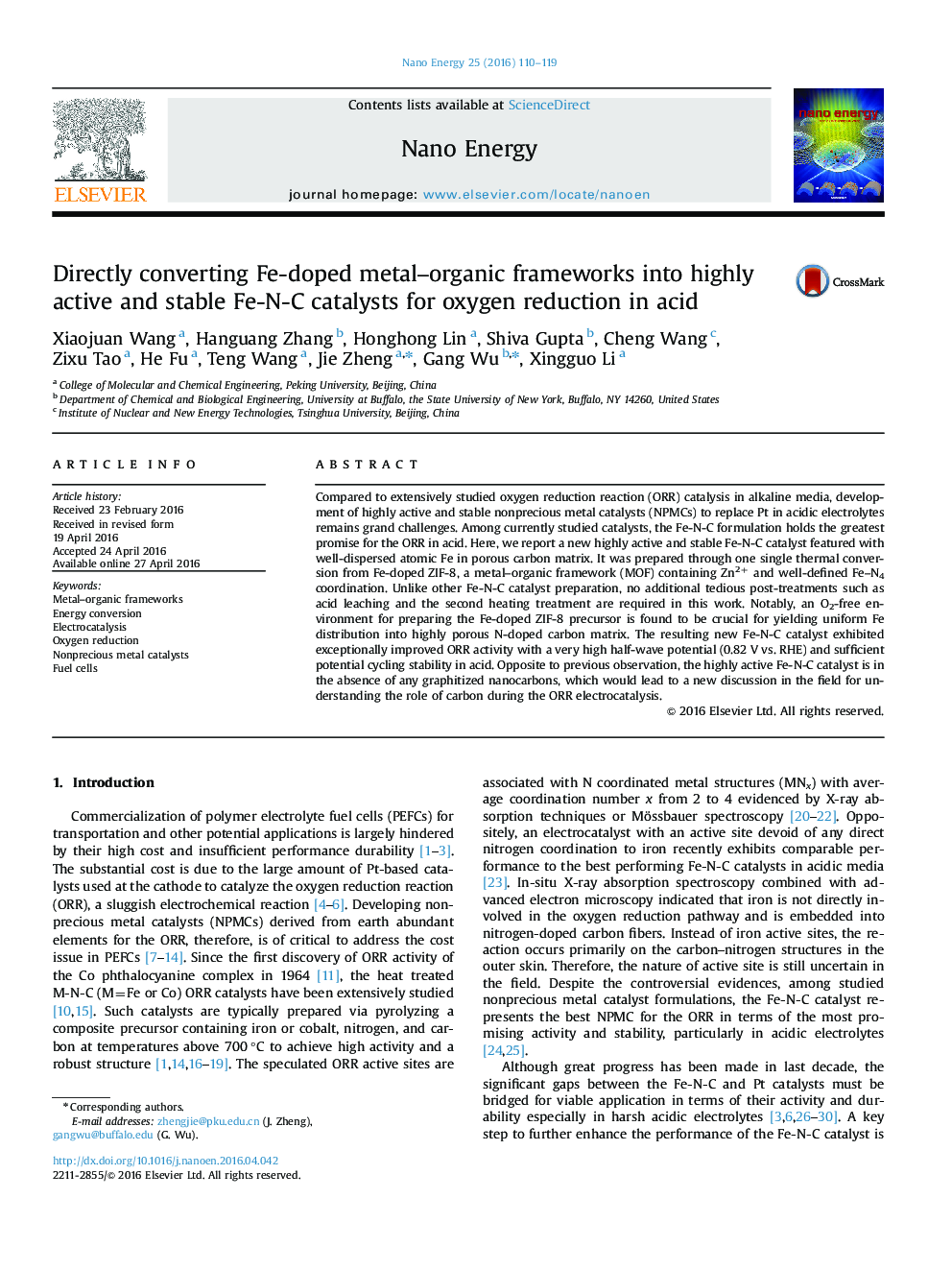| کد مقاله | کد نشریه | سال انتشار | مقاله انگلیسی | نسخه تمام متن |
|---|---|---|---|---|
| 1557160 | 1513741 | 2016 | 10 صفحه PDF | دانلود رایگان |

• A highly active and stable Fe-N-C catalyst with uniform atomic iron distribution is derived from ZIF-8.
• An O2-free environment for preparing the Fe-doped ZIF-8 precursor is found to be crucial.
• The Fe-N-C catalyst exhibited a high half-wave potential (0.82 V vs. RHE) and sufficient stability in acid.
• Graphitized carbon in Fe-N-C catalysts is not a necessity for high ORR activity.
Compared to extensively studied oxygen reduction reaction (ORR) catalysis in alkaline media, development of highly active and stable nonprecious metal catalysts (NPMCs) to replace Pt in acidic electrolytes remains grand challenges. Among currently studied catalysts, the Fe-N-C formulation holds the greatest promise for the ORR in acid. Here, we report a new highly active and stable Fe-N-C catalyst featured with well-dispersed atomic Fe in porous carbon matrix. It was prepared through one single thermal conversion from Fe-doped ZIF-8, a metal–organic framework (MOF) containing Zn2+ and well-defined Fe–N4 coordination. Unlike other Fe-N-C catalyst preparation, no additional tedious post-treatments such as acid leaching and the second heating treatment are required in this work. Notably, an O2-free environment for preparing the Fe-doped ZIF-8 precursor is found to be crucial for yielding uniform Fe distribution into highly porous N-doped carbon matrix. The resulting new Fe-N-C catalyst exhibited exceptionally improved ORR activity with a very high half-wave potential (0.82 V vs. RHE) and sufficient potential cycling stability in acid. Opposite to previous observation, the highly active Fe-N-C catalyst is in the absence of any graphitized nanocarbons, which would lead to a new discussion in the field for understanding the role of carbon during the ORR electrocatalysis.
Figure optionsDownload as PowerPoint slide
Journal: Nano Energy - Volume 25, July 2016, Pages 110–119